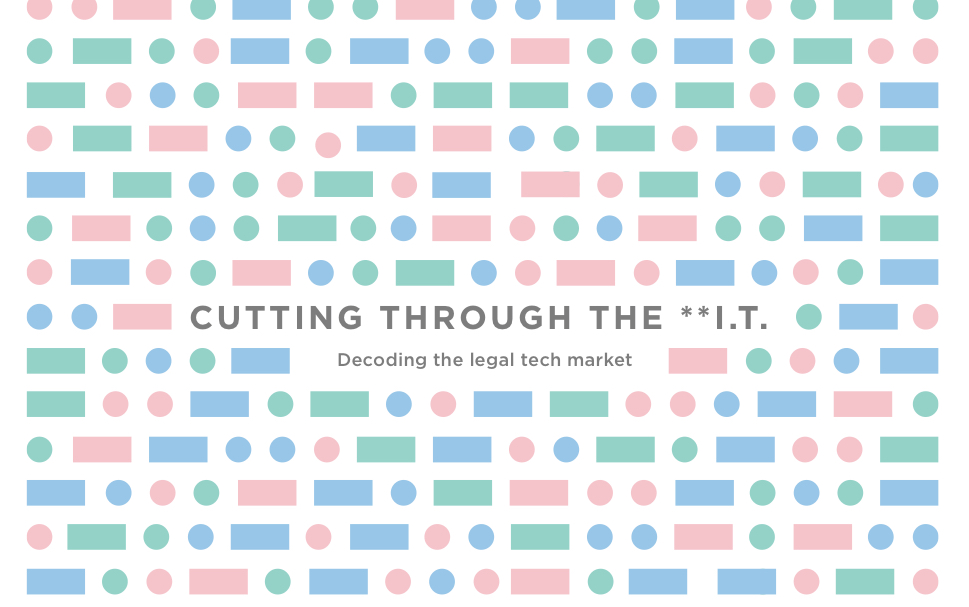Do you have FOMO – fear of missing out on new legal technology? You are not alone. Many publications and conferences suggest legal tech will disrupt lawyers. And that unless you license many new tools, you’ll fall behind.
To address this fear, I recently collaborated on a white paper about legal technology with LOD, Lawyers on Demand. LOD is “one of the largest and fastest growing flexible legal services businesses, continuing to lead the market we created.” You can download the complete white paper here. I summarize highlights here.
We tackled the question of whether lawyers, especially in-house counsel, should worry about FOMO and adopt more legal technology. Our answer, in brief: no. But that doesn’t mean you can ignore legal tech.
Despite hundreds of recent legal tech start-ups, lawyers work today largely as they did two decades ago. For example, artificial intelligence (AI) – despite robot lawyer predictions – has mainly increased the efficiency of document review in discovery and due diligence. It has not fundamentally altered what lawyers do.
Gaining the benefit of legal tech, old or new, depends on adoption. Not just lawyers resist adopting new things – everyone does. Even people whose life depends on diet or behavior change often fail to follow doctors’ orders.
Consider this challenge with a single legal tech example: document automation. It’s been around since the 1970s yet penetration remains low. Until we make it someone’s job to automate documents, it will remain low. Why, after all, would a busy lawyer spend her precious spare time automating a document?
The key to adoption is answering the question “what’s in it for me?”. Too often, change proponents lack an answer. A good answer depends on defining precisely the problem to solve. The problem “produce documents faster” lacks precision. One way to solve it: teach lawyers to type faster! Make sure you know exactly what problem you want to solve and how new (or old) tech will solve it.
A proper framework can help you define problems, assess how easy or hard they will be to solve, and how big the adoption challenge will be. We put forward a model that places potential changes along two axes. On the horizontal axis, technology moves from enabling to transformative. Enabling changes are easier to engineer than are transformative ones. On the vertical axis, “impact” moves from individual to institutional. Individual changes, of course, are easier than institutional ones.
Beyond defining the problem you must recognize that technology alone rarely suffices to solve it. Process, culture, and incentive changes typically are required. The seven questions below can help you make sure you think about the problem properly:
- Confirm the problem statement
- Determine the solution elements
- Make sure you really need new technology
- Be prepared to re-design workflows and processes
- Pilot at minimum, go agile if possible
- Consider your content strategy
- Develop a data strategy
Once you define the problem and answer these questions, you also need a plan to foster adoption. Have an answer to “what’s in it for me”, be prepared to push from the top down (e.g., tie performance evaluations to adoption), and communicate clearly and regularly. Also, try to enlist key influencers in your organization who will support the solution.
In-house lawyers must, more so than law firm lawyers, consider whether they have the right foundation for new legal tech. Many law departments lack adequate IT resources. And in-house counsel often feel even more time pressed than their outside counsel colleagues. You can’t hope to gain adoption without addressing these foundational issues.
Despite promises of massive innovation and disruption in the legal market, most lawyers change how they work rather slowly. And the only way to get the benefit of legal tech is if lawyers change how they work. That’s why answering what’s in it for me and having a process and adoption plan are key success ingredients.
Because this is all hard word and takes resources, you are not alone if you think you lag in legal tech uptake. I encourage you to download and read the full white paper. But don’t take it or this summary as an excuse not to act. Instead, read it with the goal to overcome the fear of missing out and develop realistic expectations and plans. And be satisfied if you can achieve regular, incremental improvements.
Archives
Blog Categories
- Alternative Legal Provider (44)
- Artificial Intelligence (AI) (57)
- Bar Regulation (13)
- Best Practices (39)
- Big Data and Data Science (14)
- Blockchain (10)
- Bloomberg Biz of Law Summit – Live (6)
- Business Intelligence (21)
- Contract Management (21)
- Cool Legal Conferences (13)
- COVID-19 (11)
- Design (5)
- Do Less Law (40)
- eDiscovery and Litigation Support (165)
- Experience Management (12)
- Extranets (11)
- General (194)
- Innovation and Change Management (188)
- Interesting Technology (105)
- Knowledge Management (229)
- Law Department Management (20)
- Law Departments / Client Service (120)
- Law Factory v. Bet the Farm (30)
- Law Firm Service Delivery (128)
- Law Firm Staffing (27)
- Law Libraries (6)
- Legal market survey featured (6)
- Legal Process Improvement (27)
- Legal Project Management (26)
- Legal Secretaries – Their Future (17)
- Legal Tech Start-Ups (18)
- Litigation Finance (5)
- Low Cost Law Firm Centers (22)
- Management and Technology (179)
- Notices re this Blog (10)
- Online Legal Services (64)
- Outsourcing (141)
- Personal Productivity (40)
- Roundup (58)
- Structure of Legal Business (2)
- Supplier News (13)
- Visual Intelligence (14)

